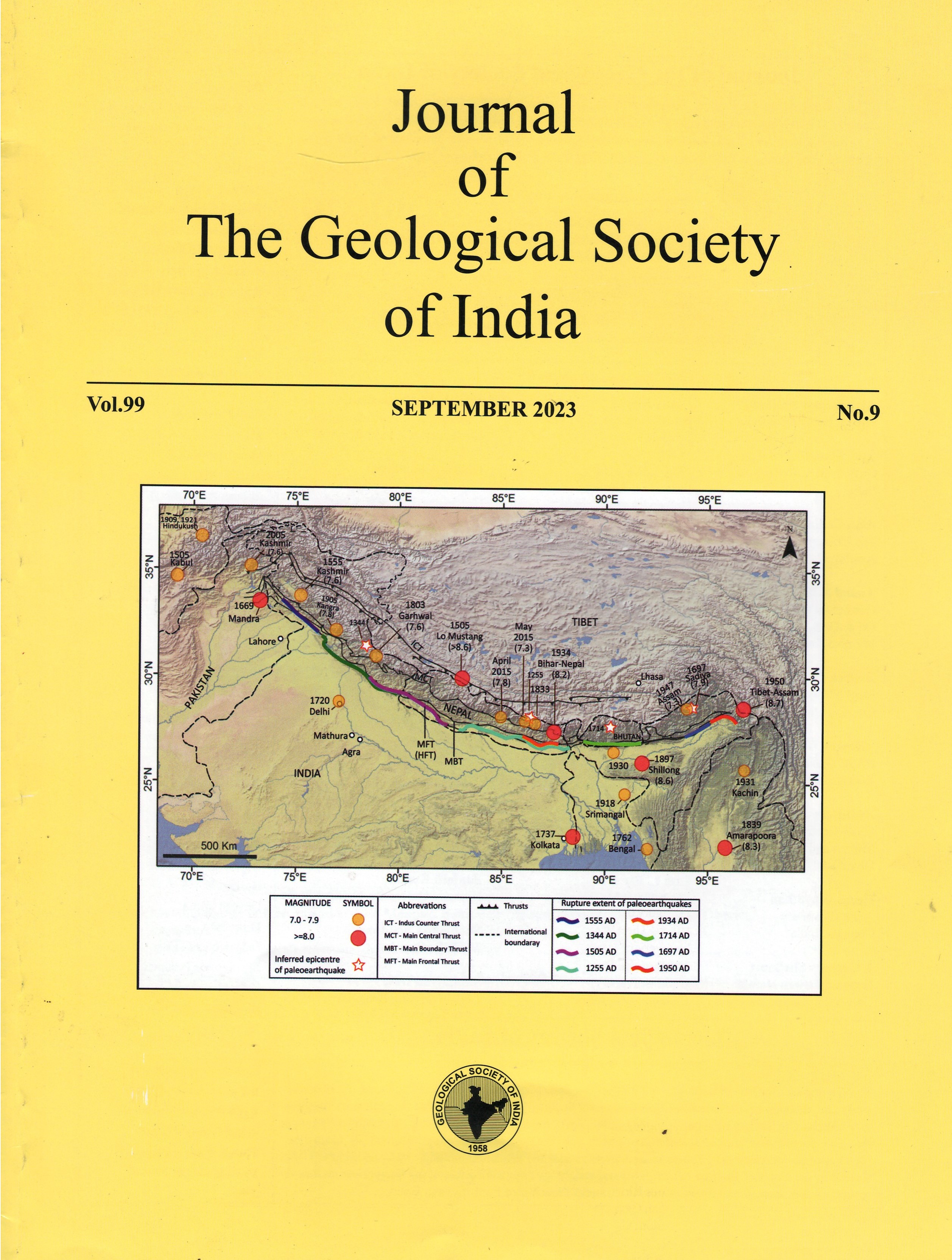Sedimentary Parameters and Evolution of the Outwash Plain Deposits During Late Holocene in the Gangotri Glacier Region, Garhwal Himalaya, India
DOI:
https://doi.org/10.1007/s12594-023-2465-zKeywords:
No KeywordsAbstract
Gangotri glacier located in the Uttarkashi District of the Garhwal Himalaya, is one of the longest valley glacier. It exhibits Lateral Moraines (LM), Recessional Moraines (RM), Kame Terraces (KT) and Outwash Plains (OWP) as important landforms. The sediments coded in these landforms, provide the information about sedimentary characteristics, and the evolutionary history of the Gangotri Glacier Region (GGR). The Gangotri is a well studied glacier, however the sedimentological characteristics and evolution of many landforms are yet to be understood. Therefore, present paper aimed to explain the sedimentological characteristics and the evolutionary history of the outwash plain deposits.
The OWP deposits were studied by making a trench near Bhujbas and collecting the samples from it. The granulometric analysis explain that the mean grain size of the OWP sediments varies from 0.258 φ to 2.006 φ indicate coarse to medium sand. The skewness, varies from 0.138 φ to 0.427 φ indicate dominance of fine grained sediments. The kurtosis varying from 0.839 φ to 1.067 φ explain the dominance of finer sediments. The standard deviation varies from 1.210 φ to 1.633 φ thus indicating poor sorting of the OWP deposits and fluctuation in the energy of the depositional environment. Five sedimentary facies identified are gravel sandy facies, ripple laminated silty sand facies, sandy facies, poorly sorted sandy facies and silty sand facies.
The study describes that the OWP deposits are stratified, consolidated to semi-consolidated, coarse to fine grained silt, sand and gravels with primary sedimentary structures, which are evolved by glacio-fluvial environment under fluctuating energy conditions during the late Holocene period.

 Anoop Kumar Singh
Anoop Kumar Singh






